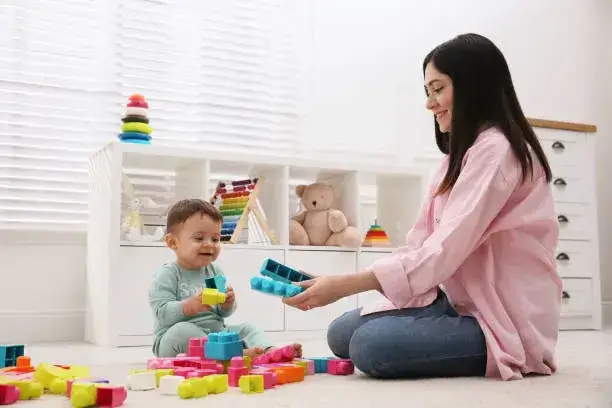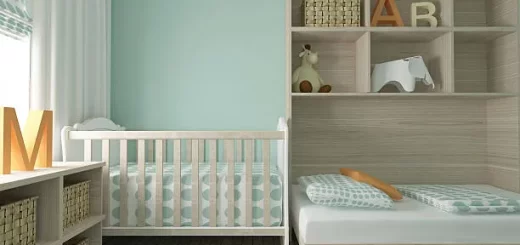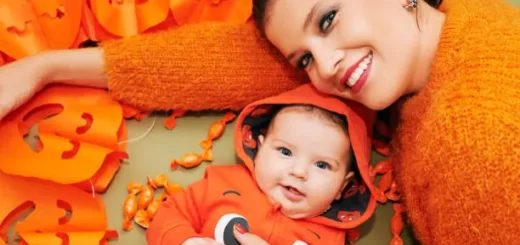Best Beds for Autistic Children: Comfort and Support Guide
Finding the best beds for autistic child is crucial for creating a safe, comfortable, and supportive sleeping environment. Children with autism often face sleep issues due to sensory sensitivities, anxiety, and other factors. Selecting the best bed for an autistic child can significantly improve sleep quality and overall well-being. This comprehensive guide will address the unique sleep needs of autistic children, explore the best beds available, and offer top recommendations. Additionally, we’ll discuss creating a sensory-friendly bedroom and provide tips for enhancing sleep hygiene.
Understanding the Sleep Needs of Autistic Children

Sleep Challenges in Autism

Children with autism often experience a variety of sleep challenges, including:
- Difficulty Falling Asleep: Anxiety and sensory sensitivities can make it hard for autistic children to relax and fall asleep.
- Frequent Night Wakings: They may wake up multiple times during the night and have trouble going back to sleep.
- Short Sleep Duration: Many autistic children sleep fewer hours than their neurotypical peers.
- Daytime Sleepiness: Poor sleep quality at night can lead to daytime sleepiness and behavioral issues.
Factors Affecting Sleep

Several factors can contribute to sleep difficulties in autistic children, such as:
- Sensory Sensitivities: Sensitivity to light, sound, and touch can disrupt sleep.
- Anxiety and Stress: Higher levels of anxiety can make it harder to fall and stay asleep.
- Irregular Sleep Patterns: Inconsistent sleep schedules can impact sleep quality.
- Medical Conditions: Conditions like gastrointestinal issues or seizures, which are more common in autistic children, can affect sleep.
Types of Beds for Autistic Children
When looking for the best bed for an autistic child, it’s essential to consider their unique needs and preferences. Here are some types of beds that can be particularly beneficial:
Sensory-Friendly Beds

Description: Sensory-friendly beds are designed to reduce sensory overload and provide a calming environment.
Benefits: These beds often have features like enclosed spaces, soft fabrics, and gentle lighting to help autistic children feel safe and relaxed.
Weighted Blankets and Mattresses

Description: Weighted blankets and mattresses provide gentle, even pressure across the body.
Benefits: This deep pressure stimulation can have a calming effect, reducing anxiety and promoting relaxation.
Low-Profile Beds

Description: Low-profile beds are close to the ground, making it easier for children to get in and out of bed safely.
Benefits: Reduces the risk of injury from falls and provides a sense of security for children who may feel overwhelmed by higher beds.
Loft Beds and Bunk Beds

Description: Loft beds and bunk beds provide additional space underneath for play or storage.
Benefits: These beds can be ideal for children who need a designated space for sensory activities or a cozy nook to retreat to.
Therapeutic Beds

Description: Therapeutic beds are designed specifically for children with special needs, offering features like adjustable firmness, temperature control, and motion isolation.
Benefits: These beds can address specific sleep issues, providing a more personalized sleep experience.
Top Recommendations for the Best Bed for an Autistic Child
Here are some of the best beds available on the market, chosen for their quality, sensory-friendly features, and overall appeal for autistic children:
The Safe Place Bedding Sensory Bed Tent

Description: An enclosed bed tent that provides a secure and calming sleep environment.
Features: Breathable fabric, easy-to-clean material, and a zipper closure.
Benefits: Helps reduce sensory overload, creates a cozy space, and improves sleep quality.
Weighted Blanket by YnM

Description: A high-quality weighted blanket designed to provide deep pressure stimulation.
Features: Multiple sizes and weights, breathable cotton fabric, and evenly distributed weight.
Benefits: Reduces anxiety, promotes relaxation, and improves sleep quality.
The Nod by Tuft & Needle Adaptive Foam Mattress

Description: A supportive foam mattress that adapts to the body’s shape.
Features: Pressure relief, temperature regulation, and motion isolation.
Benefits: Provides comfort, reduces pressure points, and minimizes disturbances from movement.
Max & Lily Solid Wood Bunk Bed

Description: A sturdy bunk bed made from solid wood, with a low profile and optional storage drawers.
Features: Durable construction, safety rails, and ladder for easy access.
Benefits: Saves space, offers a sense of security, and provides storage options.
Bed Frame by Zinus

Description: A low-profile bed frame with a sturdy metal construction.
Features: Easy assembly, strong support, and under-bed storage space.
Benefits: Provides a secure sleep environment, reduces the risk of falls, and offers additional storage.
Creating a Sensory-Friendly Bedroom

In addition to choosing the best bed for an autistic child, creating a sensory-friendly bedroom can significantly improve their sleep quality. Here are some tips for designing a calming and supportive sleep environment:
Lighting
- Soft Lighting: Use dimmable lights or soft nightlights to create a calming atmosphere.
- Blackout Curtains: Install blackout curtains to block out external light and maintain a dark sleeping environment.
Sound
- White Noise Machines: Use white noise machines or fans to drown out distracting noises.
- Soundproofing: Consider soundproofing the bedroom to reduce external noise.
Temperature
- Comfortable Temperature: Maintain a cool and comfortable room temperature to promote better sleep.
- Breathable Bedding: Choose breathable fabrics for bedding to regulate body temperature.
Organization
- Clutter-Free Space: Keep the bedroom organized and free of clutter to reduce stress and anxiety.
- Storage Solutions: Use storage bins, shelves, and organizers to keep toys and belongings tidy.
Calming Colors
- Soothing Colors: Use soft, calming colors like blues and greens for walls and decor.
- Avoid Overstimulation: Avoid bright, bold colors and busy patterns that can be overstimulating.
Tips for Improving Sleep Hygiene

In addition to creating a sensory-friendly bedroom and choosing the best bed for an autistic child, implementing good sleep hygiene practices can further improve sleep quality. Here are some tips:
Consistent Bedtime Routine
Establish a consistent bedtime routine to help signal to the child that it’s time to wind down and prepare for sleep. This can include activities like:
- Bath Time: A warm bath can help relax the body.
- Reading: Reading a calming story can help ease the transition to sleep.
- Quiet Time: Engage in quiet activities, such as puzzles or drawing, to promote relaxation.
Regular Sleep Schedule
Maintain a regular sleep schedule by going to bed and waking up at the same time every day, even on weekends. This helps regulate the body’s internal clock.
Limit Screen Time
Limit screen time before bed, as the blue light emitted by screens can interfere with the production of melatonin, the sleep hormone. Encourage alternative activities, such as reading or listening to calming music.
Physical Activity

Encourage regular physical activity during the day to help expend energy and promote better sleep. Avoid vigorous activity close to bedtime.
Healthy Diet
A balanced diet can impact sleep quality. Avoid heavy meals and caffeine close to bedtime, and opt for light snacks if the child is hungry.
Real-Life Success Stories: Choosing the Best Bed for an Autistic Child

To provide further insight and inspiration, here are some real-life success stories from parents who have found the best bed for their autistic child:
Sarah’s Story: The Sensory Bed Tent
Sarah, a mother of a 6-year-old autistic boy named Liam, struggled with getting her son to sleep through the night. Liam often woke up multiple times and had difficulty falling back asleep. After researching various options, Sarah decided to try a sensory bed tent. The enclosed space provided Liam with a sense of security and reduced sensory overload. Within a few weeks, Liam’s sleep improved significantly, and he started sleeping through the night.
John’s Story: The Weighted Blanket
John’s son, Ethan, was diagnosed with autism at age 4. Ethan experienced high levels of anxiety, making it difficult for him to relax and fall asleep. John purchased a weighted blanket, hoping it would help. The deep pressure provided by the blanket had a calming effect on Ethan, and he began falling asleep faster and staying asleep longer. The weighted blanket became an essential part of Ethan’s bedtime routine.
Emily’s Story: The Low-Profile Bed
Emily’s 5-year-old daughter, Ava, had sensory sensitivities and was prone to falling out of bed. Emily opted for a low-profile bed with a sturdy frame and safety rails. The low height of the bed made it easier for Ava to get in and out safely, and the safety rails provided additional security. Ava’s sleep improved, and Emily had peace of mind knowing her daughter was safe.
Conclusion

Finding the best bed for an autistic child involves understanding their unique needs and preferences, exploring various types of beds, and creating a sensory-friendly bedroom. By considering factors like sensory sensitivities, anxiety, and sleep patterns, you can choose a bed that provides comfort, security, and support. Incorporating good sleep hygiene practices and designing a calming sleep environment can further enhance sleep quality. With the right approach, you can help your autistic child achieve better sleep, leading to improved overall well-being and development.
Note: This post contains Amazon affiliate links. If you make a purchase through these links, I may receive a small commission at no extra cost to you.












